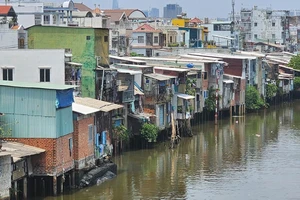
Metro or rapid transit has been invented and used globally for over a century as a transit hub thanks to its great architectural convenience. The number of daily metro users in major cities in the world like Tokyo, Beijing, Moscow is significantly large.
Each metro station can serve millions of passengers each day, and hence the need of proper transit- and commercial-oriented development in its neighboring areas to answer the needs of these people. It is expected that these newly established urban areas might replace more cities formed under traditional administrative structure.
However, HCMC’s master planning has long been structured according to the zoning model, with a downtown area, a central area for each district or ward, and some wholesale markets. Obviously, there will be contradictions between the modern metro style and traditional zoning one once more metro lines are introduced in HCMC in the future.
Therefore, the municipal authorities should tackle such issues for neighboring sites of metro lines as land resources, sufficient parking space for metro passengers, intersections between the metro lines and the current road system. This must be included in the adjusted master planning of the city as a strategic policy on the city’s total surface area.
Also regarding traffic facilities, Saigon has long been considered a city of rivers. Sadly, river traffic has been neglected so far. Lately, there are certain projects to exploit this natural advantage, but merely for tourism purposes, which is a pity considering that the river system of the city is able to do much more for public transport.
Another critical matter to address is accommodation for a huge quantity of laborers coming to HCMC from other provinces besides hotels to serve tourists.
Currently, there exist a contradictory fact that many reasonable apartments or residential buildings for resettlement have been built and left unused for many years, while millions of poor people have to live in narrow boarding houses without sufficient service infrastructure.
It is these structures that become so vulnerable during incidents like pandemics. Obviously, a sound urban planning must include logical solutions for problems arisen in these parts, especially in sensitive times.
Even with the law that 10-20 percent of the land resources in new urban areas is allocated for reasonable apartments, the chance for vulnerable people to obtain accommodation in these sites is still quite low, as they cannot find affordable services like schools, hospitals, eateries, markets when they move here.
The adjusted master planning of HCMC, besides introducing a more convenient traffic system, should provide a feasible solution for this issue so that migrating laborers feel at ease when they come here to work. These residential sites are called ‘transitional’ urban areas, with proper social security conditions for low-income people. From these places, another generation will be born and develop into successful urban individuals, contributing their part to the sustainable growth of HCMC.
























